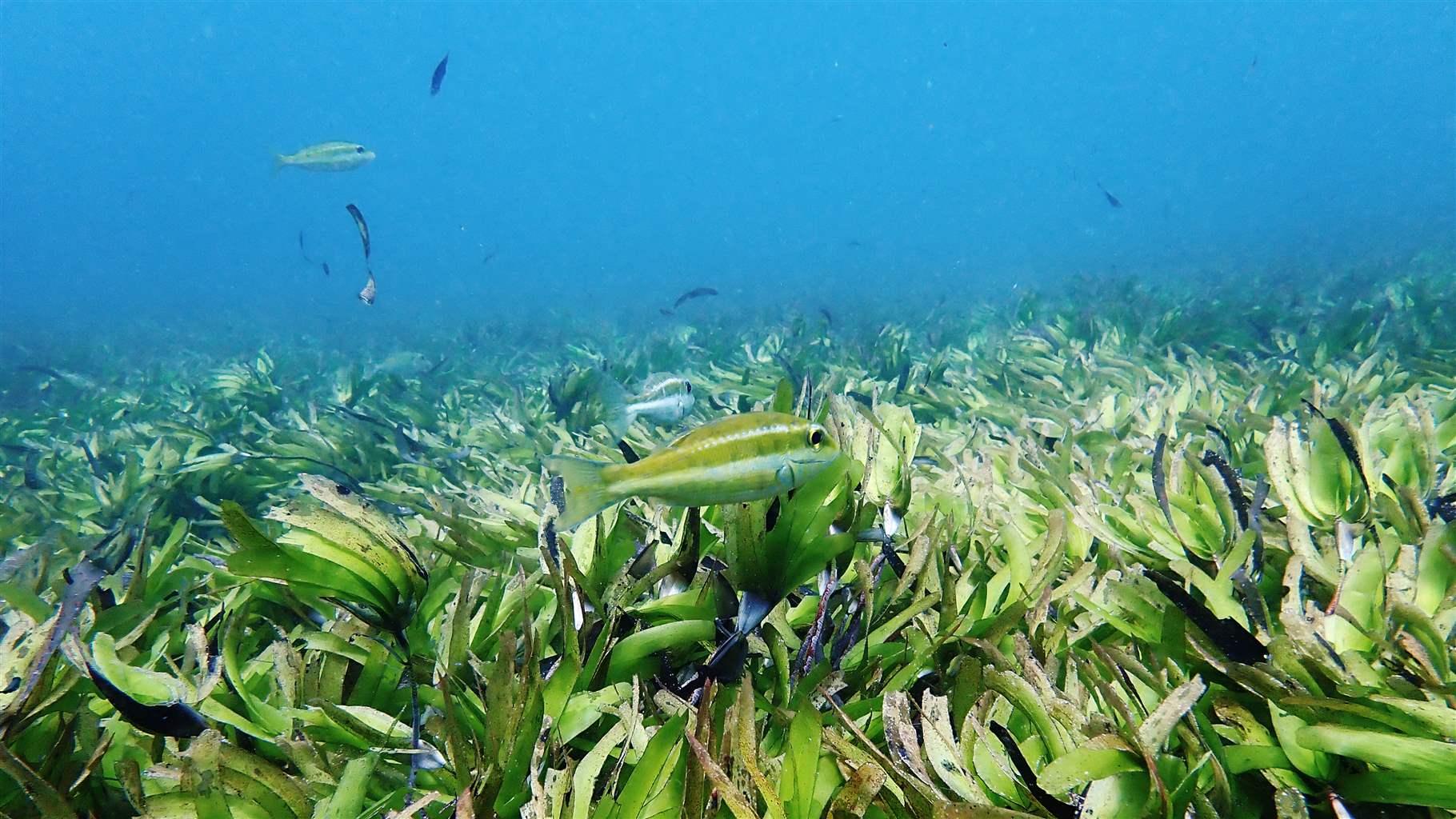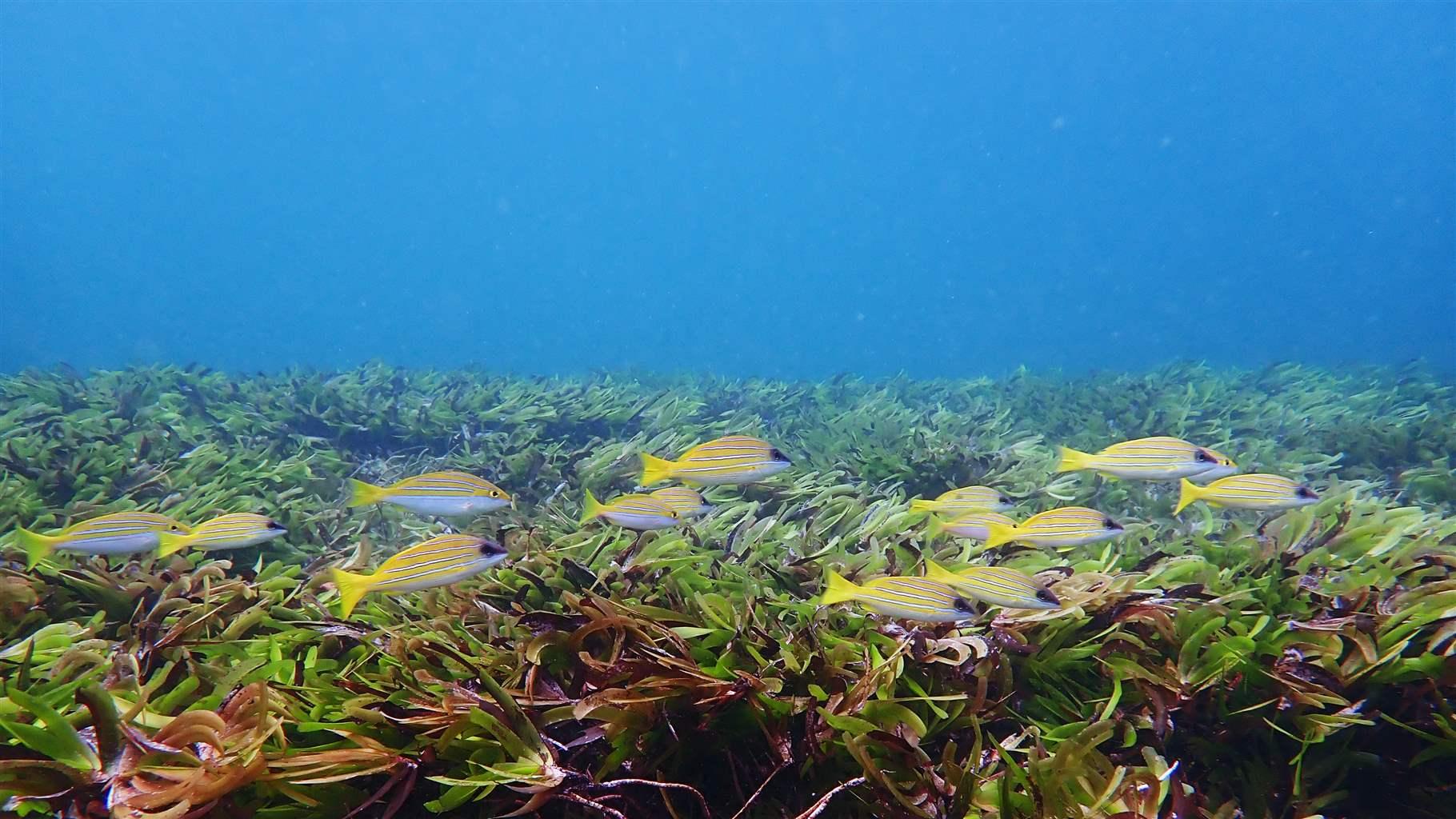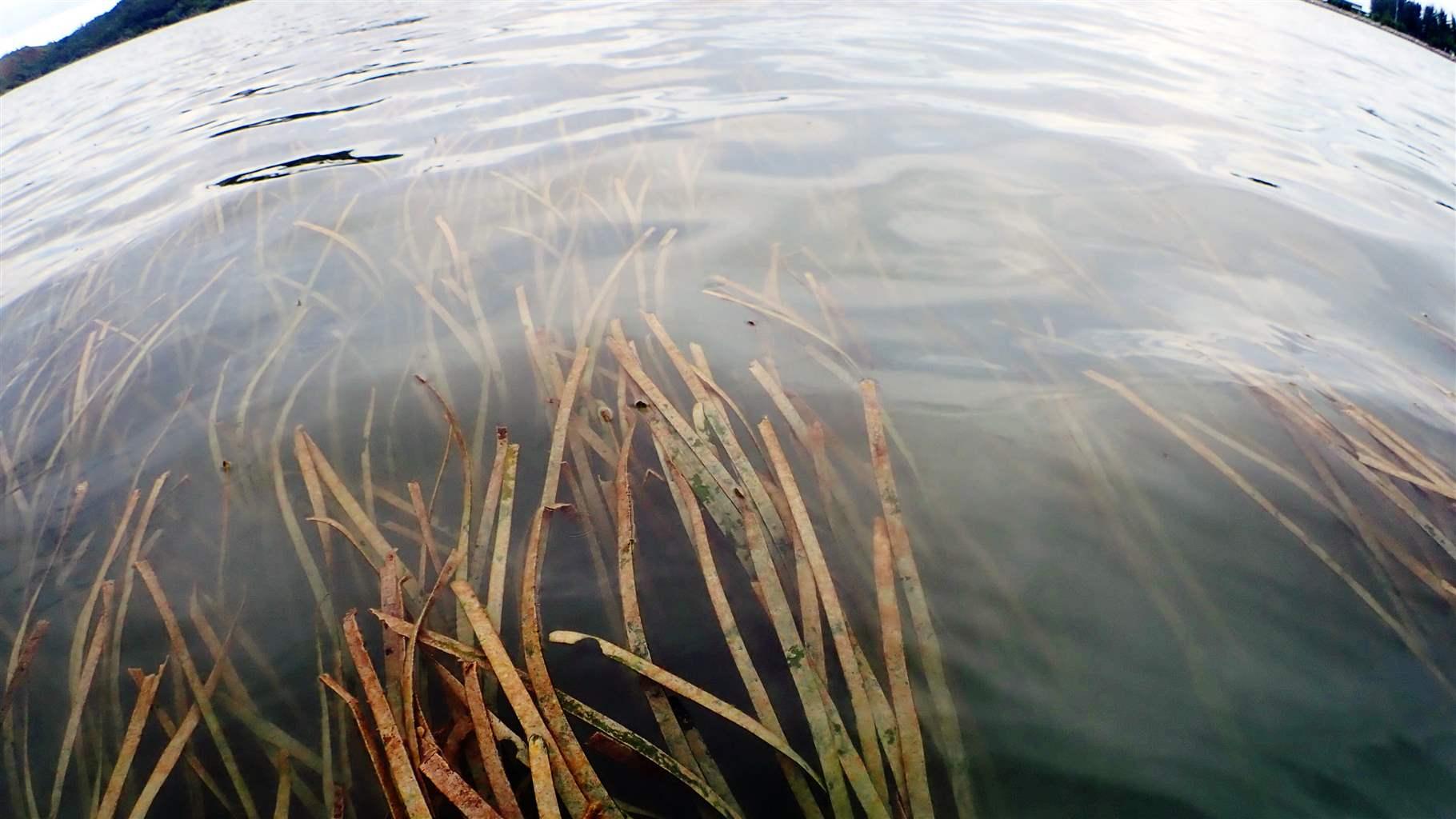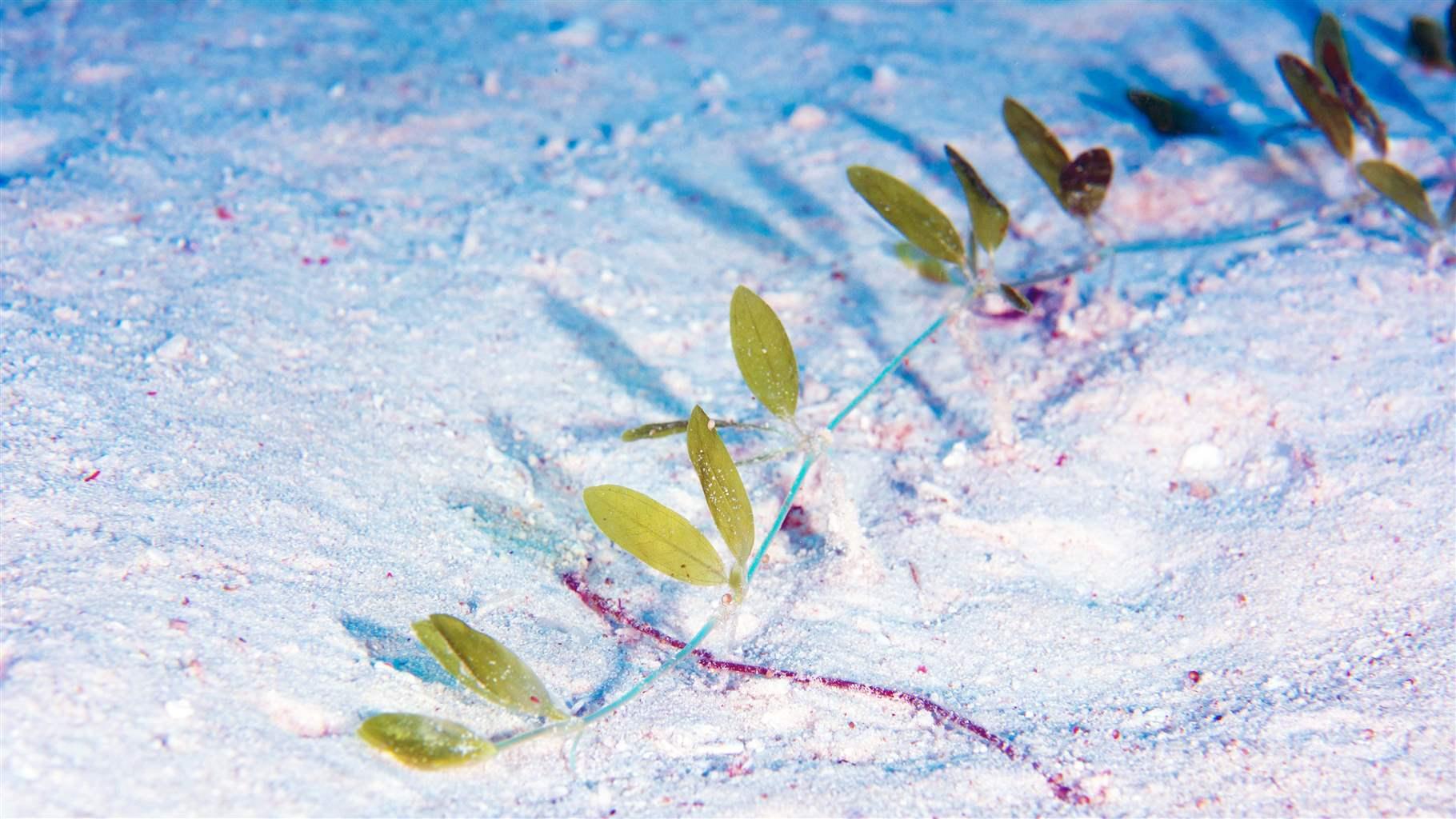Seychelles’ ‘Grass-Roots’ Effort to Name Seagrass Supports Conservation Effort
Public connection to vital habitats is key to preserving them and their climate benefits, officials say

Editor’s note: This article was updated on May 3, 2022, to include a video produced by the Seychelles Conservation and Climate Adaptation Trust.
Seagrass meadows in the Seychelles are critical to both people and nature. These coastal wetlands provide foraging and nursery grounds for a wide variety of marine life, including fish, turtles, and invertebrates; help buffer coastlines from storm surges; and sequester carbon. The climate adaptation and mitigation potential of this ecosystem spurred the Seychelles government to commit to protecting 100% of the country’s seagrass by 2030 as part of its nationally determined contribution to the Paris Agreement.
Now, to further celebrate March as Seagrass Awareness Month, Seychelles has officially added words for seagrass to the Seychellois Creole language, the native language of Seychelles. The Seychelles Conservation and Climate Adaptation Trust (SeyCCAT) solicited suggestions from the public and, following a round of citizen voting and expert review, announced that “zerb lanmer” and “gomon zerb” are the locally derived Creole words that now specifically refer to seagrass. SeyCCAT’s public engagement campaign also yielded locally derived names to identify the five main “seagrass life-forms”—groups of seagrass species that share similar characteristics—found in Seychelles.
The development of local terms to refer to seagrass not only helps raise awareness of the ecosystem but can help drive conservation.
“For us, having official Creole terms for seagrass and its life-forms reinforces the desire to have all our people not only understand and appreciate seagrass, but also feel mandated to play a role in preserving it,” said Flavien Joubert, minister of Agriculture, Climate Change and Environment.
This work to develop unique local names for seagrass began in 2021 as part of SeyCCAT’s Coastal Wetlands and Climate Change Project to raise awareness on the importance of seagrass. At the time, SeyCCAT recognized that there was no unique word for the ecosystem; historically, the word “gomon” has been used to refer to both seagrass and algae. As a result, SeyCCAT launched a national campaign to develop Creole names for seagrass and groups of similar species commonly found in Seychelles’ waters.
SeyCCAT used social media posts, radio programs, and presentations to community groups to encourage the public to participate in creating the Creole seagrass names. The fishing community, which is highly familiar with seagrass habitats, played a central role in these outreach efforts. After compiling public suggestions and asking Seychellois to vote on them, SeyCCAT submitted a list to a committee of scientists and linguists, which narrowed it further. Lakademi Kreol Sesel, the Creole Institute, then accepted those as the final names.
“Seagrass in Seychelles includes about a dozen species that can be grouped into five easily distinguished life-forms,” said Jeanne A. Mortimer, scientific consultant to SeyCCAT. “But traditionally, most Seychellois do not even distinguish between seagrasses and algae. Because we found that three of the five life-forms had no existing Creole name, we enlisted the public to create names for them and to then vote for their favorites amongst the submissions. We believe this SeyCCAT project has not only created awareness but a sense of ownership for seagrasses amongst the Seychellois people.”
The official seagrass names, along with their definitions, will be included in the next edition of the Creole dictionary.
Aside from helping Seychellois better understand and appreciate this vital ecosystem, having locally derived names for seagrass is in line with a growing global recognition of the importance of nature to human well-being. The conservation of seagrass plays a central role in tackling climate change, on both mitigation and adaptation fronts. By sustaining biodiversity, supporting livelihoods, and removing carbon dioxide from ocean waters, seagrass is an important nature-based solution to climate change, and crucial to communities the world over. As Joubert noted, “As a small island state, we need all our ecosystems to function efficiently so that our people, present and future, can continue benefiting from their services for the years to come.”
The Seychelles Conservation and Climate Adaptation Trust (SeyCCAT) launched a comprehensive grass-roots campaign to raise awareness of the value of seagrass as an important blue carbon ecosystem in Seychelles. The addition of new words for “seagrass” to the native Creole dictionary was one of many outreach efforts included in SeyCCAT’s Coastal Wetlands and Climate Change project, which kicked off in 2020. This video showcases the breadth of that project.
Stacy Baez works on The Pew Charitable Trusts’ protecting coastal wetlands and coral reefs project.
This video is hosted by YouTube. In order to view it, you must consent to the use of “Marketing Cookies” by updating your preferences in the Cookie Settings link below. View on YouTube
This video is hosted by YouTube. In order to view it, you must consent to the use of “Marketing Cookies” by updating your preferences in the Cookie Settings link below. View on YouTube















